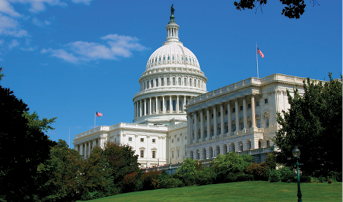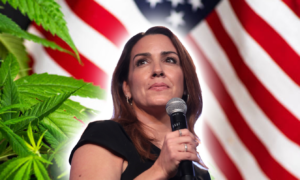
Thinkstock.com
A Hypothetical Question: What If?
What if each of the 50 states currently regulated marijuana in the same way each state currently regulates alcohol? Federal agencies might respond to our industry in the following ways:
The Food and Drug Administration (FDA) might warn cannabis-based medication producers that any claims that any medication cures, mitigates, treats or prevents any disease must be supported by scientific data satisfactory to the FDA demonstrating that the medication is safe and effective.
The Internal Revenue Service (IRS) might issue advice on tax compliance for medical marijuana businesses.
The Department of Health and Human Services (HHS) might eliminate the apparently redundant Public Health Service review requirement from its procedures for non-federally funded human research projects involving marijuana.
The Drug Enforcement Administration (DEA) might loosen restrictions on research involving cannabidiol.
The National Institute on Drug Abuse (NIDA), a unit of the National Institutes of Health, might present information that supports certain uses of medical marijuana, in addition to its usual negative information regarding all marijuana.
The Centers for Disease Control (CDC) might recommend that clinicians no longer perform urine tests for THC on patients, in order to avoid, among other things, inappropriate termination of patients from care.
The United States Securities and Exchange Commission (SEC) and the Financial Industry Regulatory Authority (FINRA) might each warn investors to consider investments in marijuana-related companies carefully, and to be aware that such companies may be at risk of federal or state criminal prosecution.
The Surgeon General might acknowledge data showing that medical marijuana may be helpful for some medical conditions and symptoms.
Well, the reality is that, between 2014 and 2017, each federal agency mentioned above has already taken the position described above.
But is this type of federal agency response desirable? Does it fit well within our federal constitutional system?
Congress and the Federal Courts

While these federal agencies have been taking their respective positions, in Congress, the Rohrabacher-Farr Amendment—forbidding the use of federally appropriated funds to interfere with state-authorized medical marijuana programs—was passed during 2014 for 2015, during 2015 for 2016, and during 2016 for the period ending April 28, 2017. On May 5, President Trump signed the current federal budget bill, which included an extension of the Rohrabacher-Farr Amendment’s coverage through September 2017. Interpreting Rohrabacher-Farr, the federal courts have questioned whether federal prosecutions were improperly pursuing the activities of medical marijuana organizations in states where such activities were legal. The federal court actions effectively stopped the prosecutions.
Separately, the United States Supreme Court requested advice from the Obama administration regarding a dispute between Nebraska and Oklahoma, and Colorado. The former two states had complained about the flow of marijuana from Colorado, where it was legal, into Nebraska and Oklahoma, where it was not. The Obama administration suggested that the Court stay away from the issue, and the Court followed the administration’s advice.
What If the Collateral Damage From the War on Drugs Continues?
It sounds as if the executive branch, the Congress and the courts each respect, to some extent, the actions of the state legislatures that have legalized medical or recreational marijuana, or both. So far, so good. Is there a problem?
Unfortunately, yes. Since the 1970 passage of the Comprehensive Drug Abuse Prevention and Control Act, which included the Controlled Substances Act, the federal government has been extremely effective at stopping or dramatically limiting research on medical marijuana. In fact, the federal government has been far more effective at stopping research into cannabinoids and their therapeutic value than it was at limiting the unregulated drug market.

Although not every member of Congress has supported the federal government’s position regarding marijuana, the interaction of red state and blue state representatives has not allowed the federal government to respond productively to the opportunity to understand the human endocannabinoid system. We in the industry are painfully familiar with the federal demand for definitive clinical studies regarding medical marijuana and with the simultaneous federal resistance to such research. Nevertheless, 29 state legislatures have now taken medical marijuana beyond the FDA, and 15 others have done the same with CBD.
The federal War on Drugs, including the FDA’s apparent hostility to the development of marijuana as medicine, established a 47-year negative American context for marijuana. Within that negative American context, the medical understanding of the human endocannabinoid system and of marijuana developed first abroad, particularly in Israel, and next in western states such as California and Colorado.
As of today, one might argue that the legislatures of 44 states have declared that, within their borders, all or part of the cannabis plant is effective for treating certain conditions. Whether the FDA agrees or not, within the understanding of these 44 state legislatures, simply does not matter.
In most countries, no such independence from the central government exists. America is different. The states really do have power, which they exercise from time to time. Beyond simple legalization of various cannabinoids for various medical or recreational purposes, many states have gone further. They have set up systems to ensure the purity and quality of cannabis products sold within their borders.
One might argue, then, that the states have absorbed the methodologies of the Food and Drug Administration and other relevant federal agencies and applied them to marijuana. State legislatures simply lost patience with federal demands for more research while the federal government simultaneously blocked research. Some state legislatures examined the evidence on their own and declared certain diseases subject to treatment. Other state legislatures declared marijuana available to adults, and regulated and taxed it like alcohol.
The Federally Driven Foreign Advantage
The situation is, however, complicated by foreign companies that have been able to grow their own marijuana in their own countries, produce their own medications from that marijuana and test those medications in the United States with the blessing of our federal government.
G.W. Pharmaceuticals (headquartered in Salisbury, England), for example, has done exactly what good American researchers and companies would have done. The FDA could not, and did not, insist that the foreign companies base their research on marijuana grown at the University of Mississippi (which holds the sole marijuana-research contract commissioned by the NIDA). Unrestricted by the FDA, DEA and NIDA, foreign companies like G.W. Pharmaceuticals have been able to produce standardized, high-quality medicines based on the high-quality marijuana that they grew and take those medications into research.
The problem: Now, G.W. Pharmaceuticals is testing its products in the United States, among other countries. The effect is to allow, or even to encourage, foreign corporations to do the research and development that the federal government has historically prevented American companies from doing.
Now American companies are requesting authority from state legislatures to begin high-quality research based on high-quality products. The foreign companies, however, have the head start that our federal government gave to them here in the United States, to use in competition against American companies.
The federal government and its agencies have created nuanced positions regarding marijuana. There remains, however, a great deal of collateral damage from the War on Drugs. How should we respond? Should we ask the federal government where it would like us to take our research investment and our research jobs so that we can bring products back to the American market?




































